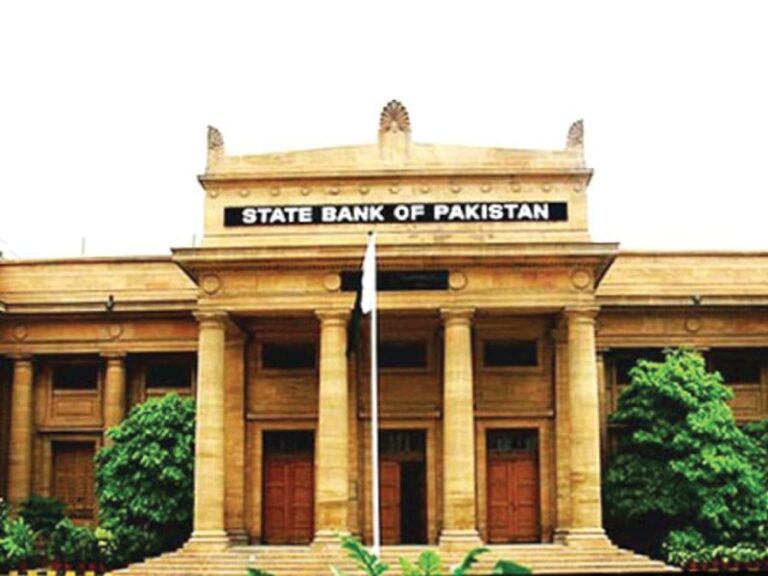KARACHI:
The State Bank of Pakistan (SBP) is set to announce its monetary policy decision on Monday, March 10. The ongoing rate-cutting cycle, which began in June 2024 from a peak of 22% and has gradually reduced to 12% by March 2025, has certainly helped restore macroeconomic stability.
However, the debate is heating up regarding whether further cuts are advisable at this stage. Let’s recap the key economic developments influencing this decision.
Inflation has collapsed, but the reasons are not all sustainable: Year-on-year inflation has plummeted from 38% in May 2023 to just 1.5% in February 2025. This extraordinary drop is driven by a high base effect, stable Pakistani rupee (hovering near 280/USD for two years), global commodity price easing and front-loaded hikes in gas and electricity tariffs. However, it’s crucial to note that low inflation doesn’t mean prices are falling; they’re just rising at a much slower pace.
Remittances and exports have stabilised the external account – for now: Thanks to macroeconomic stability under the ongoing International Monetary Fund (IMF) programme, overseas Pakistanis and exporters have moved away from speculative behaviour and are using formal banking channels for dollar inflows. As a result, remittances are averaging $3 billion per month, supported by government incentives. Exports have also shown some improvement as exporters bring back dollar earnings to reinvest.
Debt rollovers and friendly financing are covering external gaps, but only temporarily: The external financing gap has also been plugged for now through repeated debt rollovers by China, the UAE and Saudi Arabia, who continue to allow deferring repayments on an annual basis.
The IMF’s structural reform agenda has unlocked multilateral funding from the World Bank, ADB, IsDB and AIIB, ensuring short-term dollar stability. However, this is no substitute for genuine reforms; eventually, Pakistan must learn to live without bailouts.
Imports are rising again, reversing the brief current account surplus. Initially, exports and remittances were rising faster than imports, leading to brief current account surpluses. However, from January 2025 onwards, import growth has accelerated, export growth has stalled and the current account slipped back into deficit ($420 million in January 2025).
As a rule of thumb, if the trade deficit exceeds $2 billion per month, the current account will inevitably turn negative, something Pakistan cannot afford for long.
Policymakers must avoid repeating past policy errors: This is where prudent policy navigation becomes essential. Historically, policymakers delay tough decisions, letting dollar reserves drain until an economic crisis forces sharp currency depreciation and emergency rate hikes under IMF pressure.
This pattern was repeated in 2008, 2018 and 2022 and politicians always blame predecessors or the IMF. To avoid this, interest rates should not be cut so aggressively that raising them later becomes painful and destabilising.
Low inflation gives room, but caution should prevail: True, the current 1.5% inflation (February 2025) is much better than anticipated and both the SBP governor and the prime minister have hinted at further rate cuts. However, the government must recognise broader risks.
While lower rates reduce borrowing costs and support businesses, the fiscal deficit remains vulnerable due to revenue shortfalls. The only real silver lining is the sharp drop in global oil prices driven by shifting geopolitics.
Global growth slowdown and changing energy demand will shape outlook: With the US slapping tariffs on major trading partners, global growth is expected to moderate. Simultaneously, China’s growth model is shifting from energy-intensive industries towards AI, EVs, renewables and semiconductors.
If there’s a lasting Ukraine peace deal and US oil production rises by three million barrels per day under Trump, oil prices could remain low for longer, benefiting import-dependent economies like Pakistan.
Proactive exchange rate adjustment can aid exports and reserves: This is the perfect window for the government to take a proactive exchange rate adjustment, depreciating the rupee by 4-6% to 290-295 per US dollar. This would support slowing exports, mildly temper import growth, boost foreign exchange reserves and barely dent inflation, given low global oil prices.
On the other hand, if the rupee appreciates and rates fall into single digits too quickly, imports will surge, creating fresh pressure on reserves and the currency.
Structural reforms must come first, rate cuts can follow later: Smart policymaking demands that interest rate easing follows – not precedes – structural reform success. So far, only circular debt accumulation has slowed through tariff hikes and IPP deals and the tax-to-GDP ratio has improved slightly amid a contracting industrial base.
It is only after successfully privatising PIA and DISCOs, widening the tax net to include retailers, agriculture and real estate, and achieving IMF fiscal targets sustainably, that interest rate should be lowered into single digits.
Conclusion – A responsible prescription for sustainable growth: For the upcoming March 10 policy, a cautious 50-basis-point cut at most is warranted. This preserves policy flexibility, maintains economic credibility and avoids repeating past boom-bust cycles. Pakistan must learn from experience – slow and steady is the only path to credible and lasting stability.
The writer is an independent economic analyst

